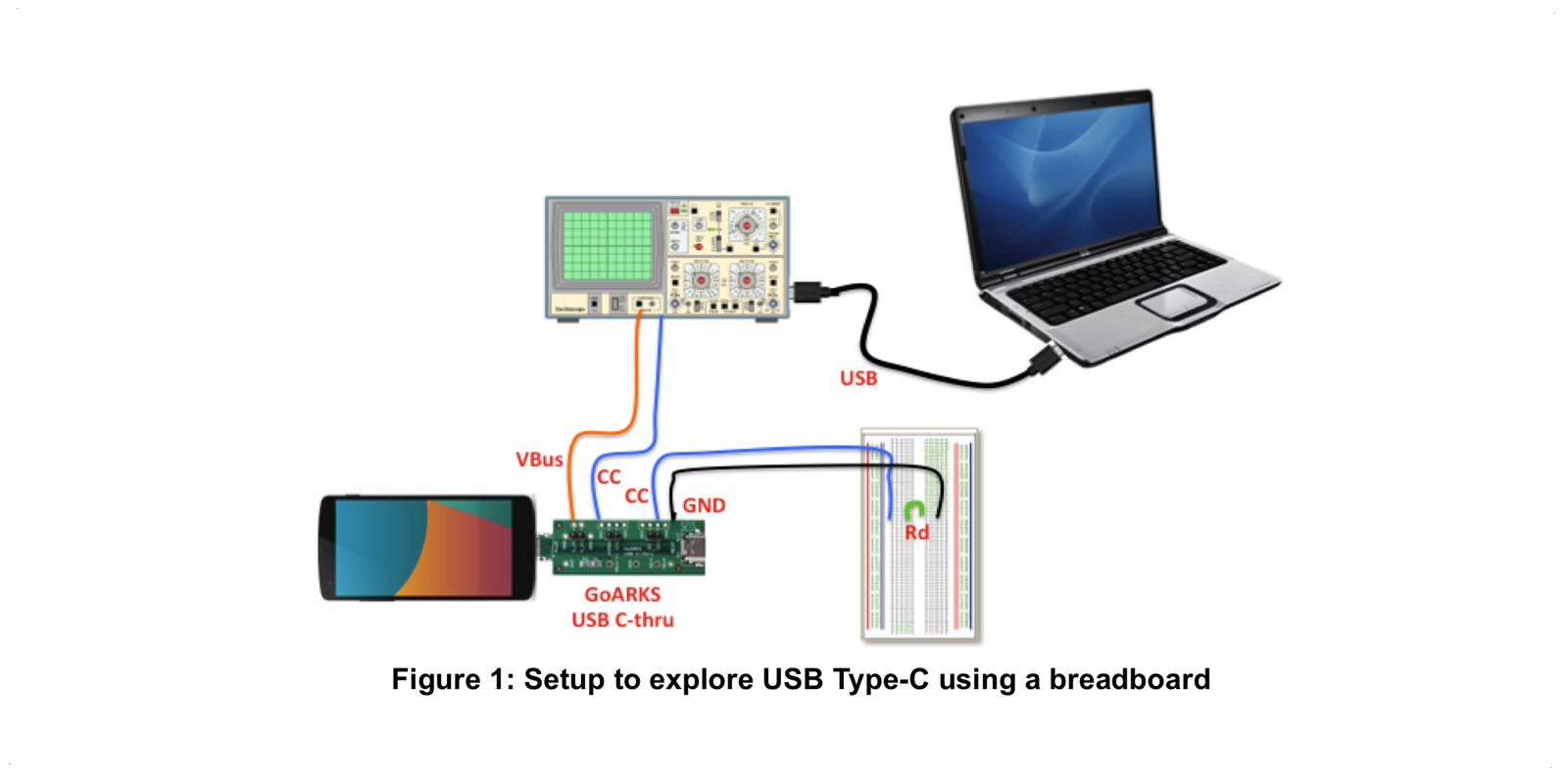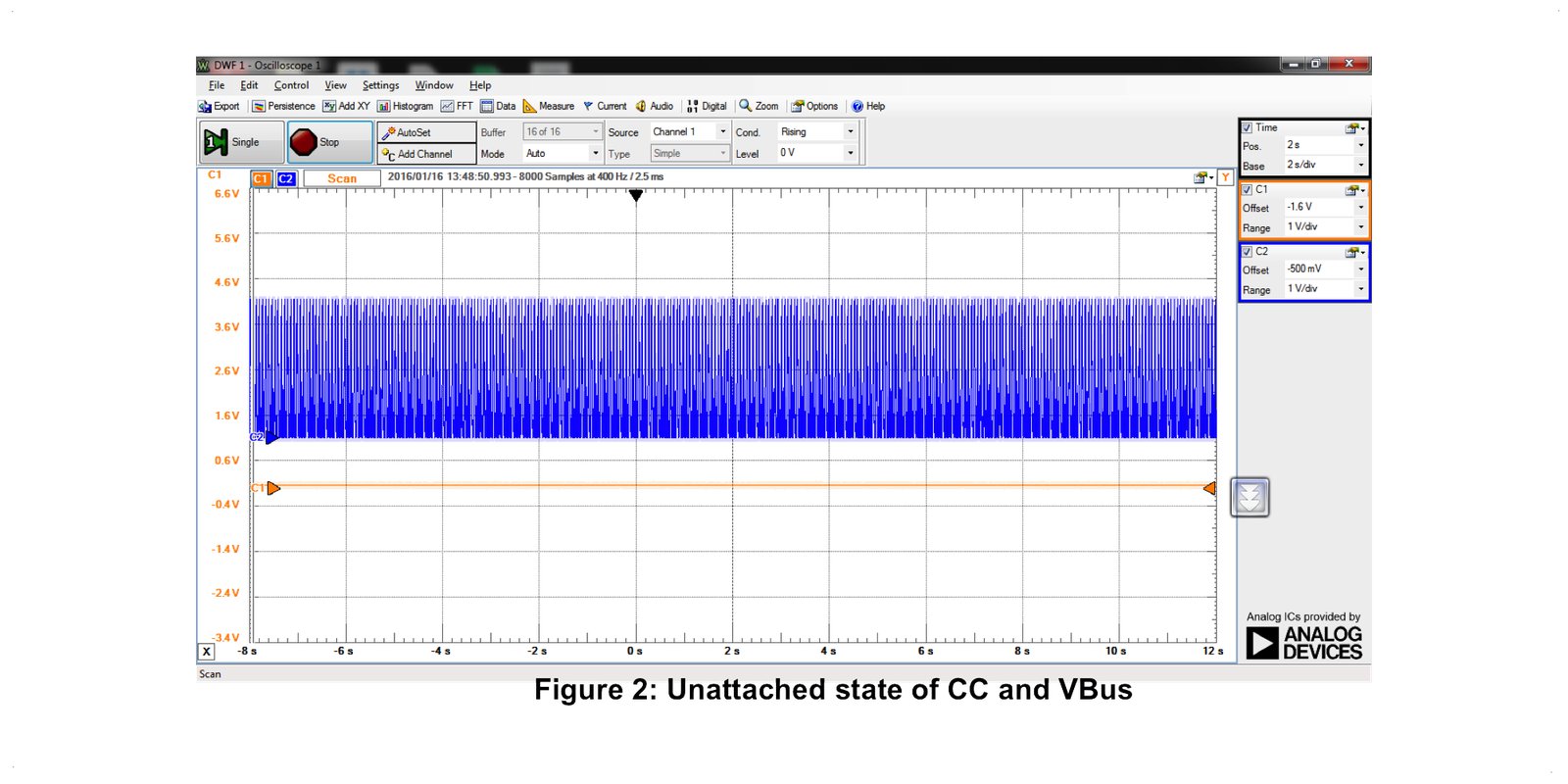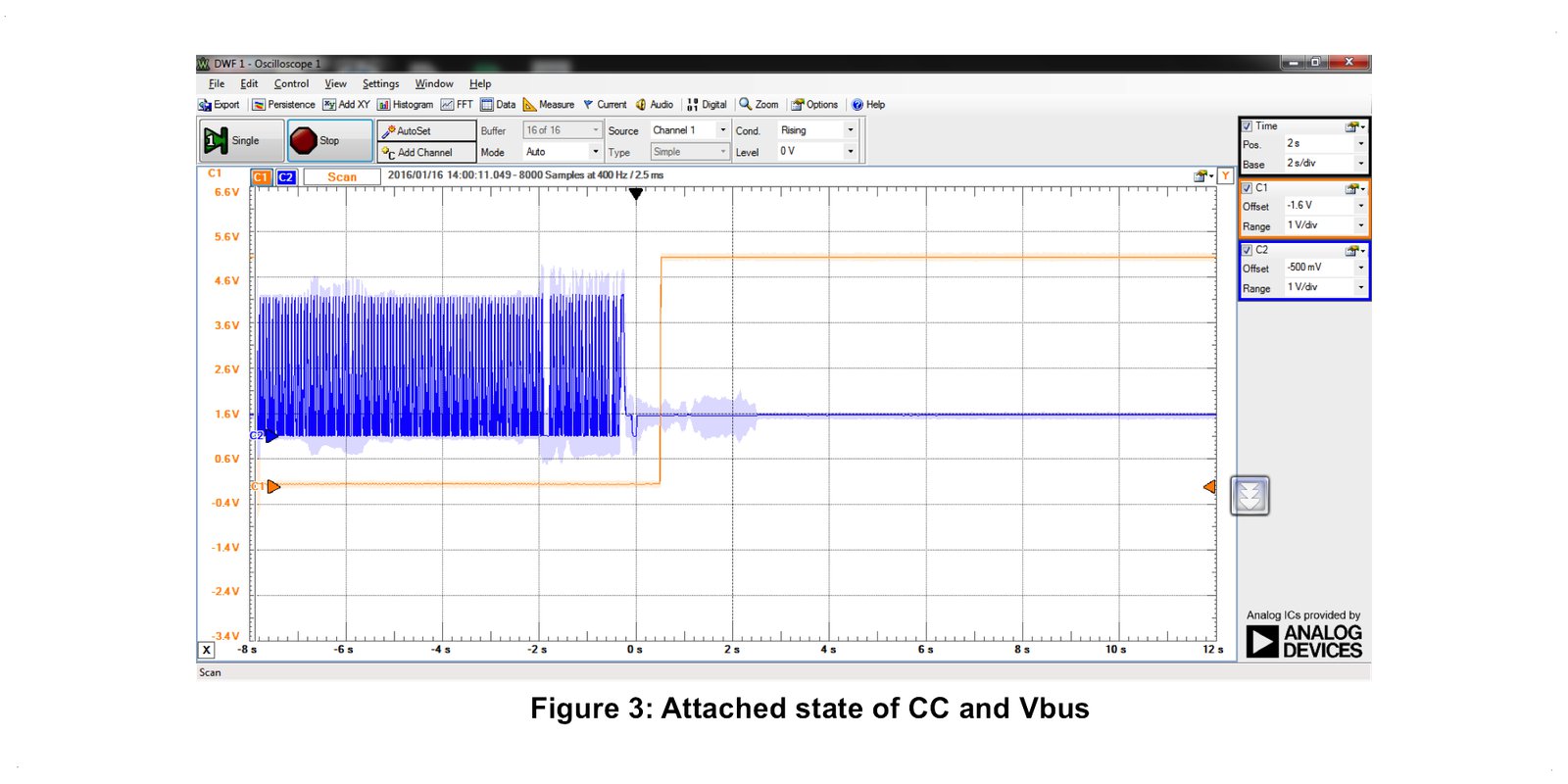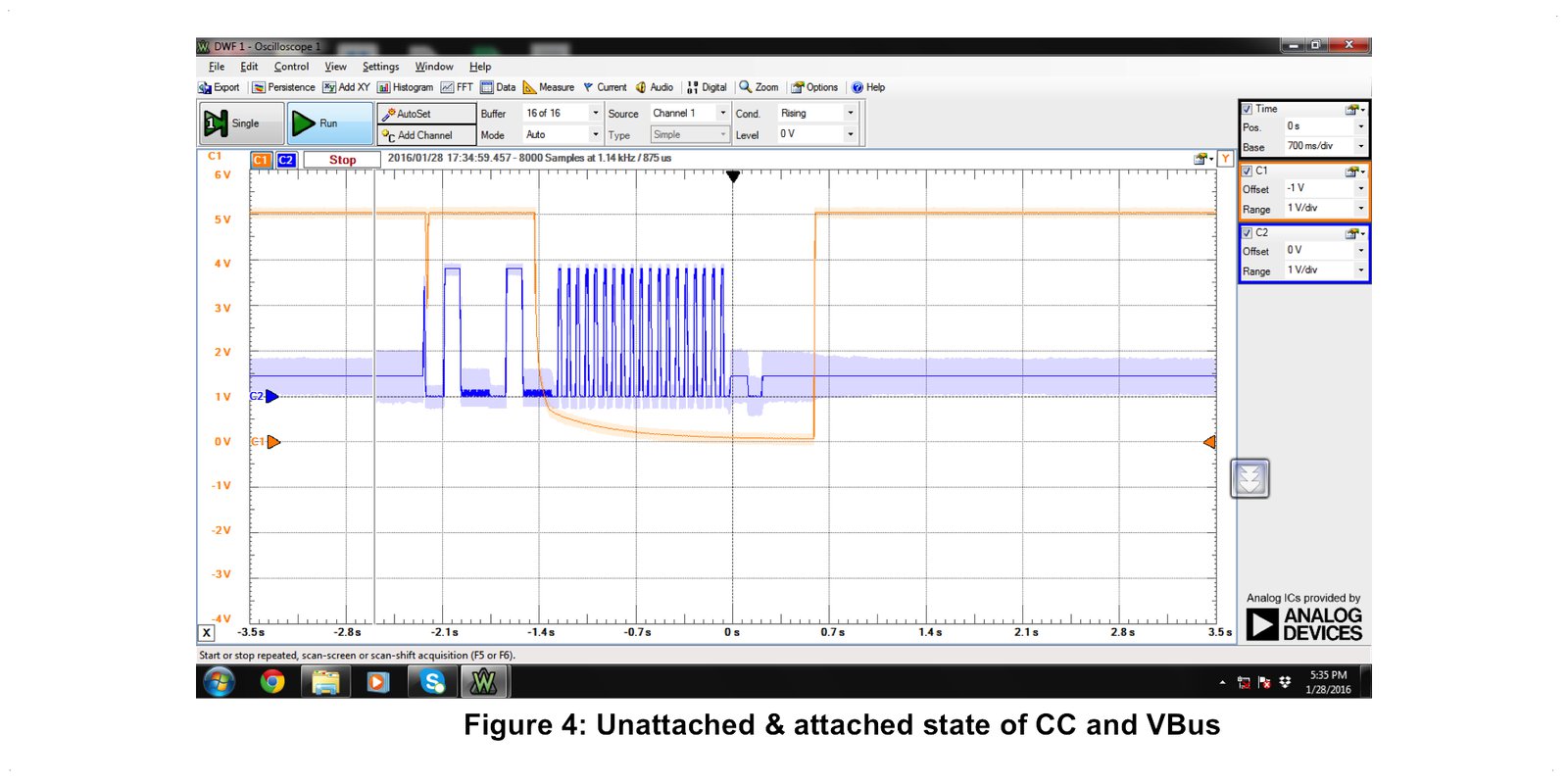Project update 1 of 5
Demo #1: Exploring Type-C with a USB C-thru and a breadboard
Welcome to the world of USB C-thru: a passive board for USB Type-C development and testing.
Thank you for your interest in our project - we hope that the USB C-thru is the tool you’ve been waiting to unlock the world of USB Type-C/USB Power Delivery(PD). As part of the campaign, we will be posting updates with demos and instructions on how to use the USB C-thru to explore and develop USB Type-C/USB PD.
In the next post we will explore how to use USB C-thru with a commercially available development kit to explore USB Power Delivery protocol.
Please feel free to reach out to us with any questions on the C-thru or USB Type-C!
-the GoArks team
###Demo #1: Exploring Type-C with a USB C-thru and a breadboard
Using a breadboard is a cost effective and useful way to explore new technology, develop a test implementation, or create prototypes. In this post we will explore USB Type-C using GoARKS USB C-thru and a breadboard. Using a breadboard lets us explore the USB Type-C connection between a device that presents Rd on the CC line (UFP) and a Device that is a DRP. We can monitor the CC and the VBus lines to understand the behavior.
As per the USB Type-C specification, the behavior should be as follows:
- In the unattached state, the DRP alternates between Rp and Rd on the CC line.
- DRP detects the Rd on CC and enters the attached state.
- DRP turns on VBUS.
- UFP detects VBus and enters attached state.
- DRP monitors CC for detach and when detected, enters the unattached state and CC lines start toggling between Rp and Rd.
- UFP monitors VBUS for detach and when detected, enters the unattached state.
Figure 1, above, illustrates a setup in which the GoArks USB C-thru is connected to a mobile phone. The mobile phone is a DRP and presents Rp and Rd alternatively on the CC lines. The USB C-thru has test points for VBus, CC1, CC2/VConn and GND. The VBus and CC are connected to an oscilloscope to monitor the lines. We included an Rd resistor (5.1k Ohms) emulating a UFP in the breadboard. When connected to the CC and GND on the USB C-thru, this will present an Rd on the CC line establishing a DRP to UFP connection.
Figure 2, below, shows the unattached state of the mobile phone tapped using USB C-thru on the oscilloscope, where the CC line is toggling and the VBus is idle.
Now when we connect the CC line to the breadboard to present an Rd on it, we see that the CC line (blue) stabilizes to indicate connection and the VBus (orange) provides the default 5V supply, as shown in Figure 3 below.
Now if we disconnect the CC line from the breadboard we can see that the CC line will start toggling and present Rp and Rd alternatively on the CC lines, and enter the unattached state. VBus will also detect, detach, and smoothly power down to 0V. Now when we reconnect the CC to the breadboard, the CC line (blue) stabilizes to indicate connection and the VBus (orange) provides the default 5V supply as shown in Figure 4, below. This smooth transition of the VBus is as per the ‘Positive/Negative Voltage Transmission’ specification given in sections 7.1.4 and 7.1.5 of the USB PD specification. 
This experiment can also be performed using Rp and Ra resistors.
 There is an initial learning curve with every new technology and if the technology shows potential, developers will be eager to launch products integrating this new technology so as to be first in the market. At the early phase of the technology adoption there is a dearth of affordable tools for testing and exploring. Enthusiasts, testers and developers are always looking for tools that will help in their endeavors, tools that will help in learning and will help in delivering robust solutions.
The GoARKS USB C-thru is a result of the need for affordable and robust tools to explore USB Type-C and test USB Type-C solutions. USB C-thru is Open hardware that aids in monitoring the USB Type-C signals.



